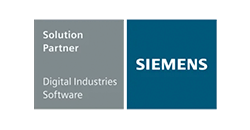Manufacturing Industry (Discrete)

Cost Reduction Using Automation as a Tool
(Discrete Manufacturing)
Automation has profoundly transformed discrete manufacturing industries by integrating cutting-edge technologies like the Internet of Things (IoT) into operational frameworks. IoT facilitates seamless connectivity among machines, devices, and data systems (ERP’s), enabling real-time monitoring and control across the production floor.
This connectivity empowers manufacturers to gather and analyze data instantly, optimizing processes, predicting maintenance needs, and enhancing overall efficiency. Automated systems in discrete manufacturing streamline assembly lines, quality control processes, and inventory management, ensuring consistent product quality and reducing cycle times.
Manufacturing Industries Served
- Automobile
- Electronics
- Glass Processing
- Metal Extrusion & Profiling
- Roofing Sheet
- Discrete Manufacturing
- Engineering
- Metal & Alloy
- Paper & Pulp
- Hollowware
Need for Automation in Manufacturing Industry (Discrete)
Order Management
Typically the Engineering and Manufacturing Industries operate in: Make to stock, Assemble to order, Job shop, Make to order, Engineer to order, Project-based environment. This very nature of order management decides the optimization strategies of planning, procurement, inventory management patterns. The ERP application must address mechanisms to handle such item management strategies
Customer Specific Product Design for a Single Item
Multiple bills of material for a single item have been a common requirement in this industry as the customer defines the design he requires. According to customer requirements, there is no need to alter the bill of material and process plan. This hinders the process planned and hence causes delivery delays.
Sub Contracting Management
Most of the engineering companies manage sub-contracting to meet the demand. Generation of challans and maintaining the stock status of material lying at the subcontract location is critical.
Production Planning
The manufacturing industry incurs high inventory costs due to a lack of stock visibility in the work-in-progress stage. An insight into the inventory in the WIP stage can help the companies plan their production more efficiently towards meeting the delivery schedules. The production planning should address the planning of the production lines by considering the availability of lines and throughput times, and order dispatch dates.
Multiple Site Management
Engineering companies find it difficult to manage and control several projects simultaneously at multiple locations. The key processes like project estimation, bills of material creation, quote submissions, and project profitability report for different manufacturing projects at multiple locations add to it.
Industry Automation Solutions
- Goods Entry Scan by CCTV
- License Plate Recognition
- Data Integration
- Barcode/QR Code Scanning
- Vendor Document Scanning
- Quality Check
- Weight Feeder
- Production Data Gathering
- Movement Detection
- Delivery Tracking
- Energy Monitoring
- Predictive Maintenance
Solutions



Quality Control Automation
Quality control automation in manufacturing involves the seamless integration of laboratory equipment with ERP systems, ensuring real-time data transfer and analysis.
By directly reading data from instruments such as spectrometers or chromatographs into the ERP, companies can automate the collection and processing of quality data.
This integration eliminates manual entry errors, accelerates decision-making, and enhances overall production efficiency. It enables manufacturers to uphold rigorous quality standards consistently, fostering improved product quality and customer satisfaction.
Energy Conservation
Energy automation entails the direct integration of energy meters with advanced systems capable of real-time data collection and analysis.
By reading data directly from energy meters, organizations can monitor and analyze energy consumption patterns across their facilities. This enables proactive energy management strategies, identifying inefficiencies and opportunities for optimization.
Moreover, such systems can detect anomalies that may indicate energy theft or unauthorized usage, thereby enhancing security and reducing operational costs. Overall, energy automation empowers businesses to optimize energy usage, improve sustainability efforts, and ensure compliance with regulatory standards.
Predictive maintenance
Predictive maintenance automation leverages advanced sensors and data analytics to monitor equipment in real-time, predicting potential failures before they occur.
By continuously collecting and analyzing operational data such as temperature, vibration, and performance metrics, these systems can identify patterns indicative of impending issues. This proactive approach enables timely maintenance interventions, preventing unexpected downtime and reducing repair costs.
By optimizing maintenance schedules based on actual equipment condition rather than fixed intervals, predictive maintenance automation improves overall equipment reliability and operational efficiency. This results in increased productivity and minimized disruptions, ultimately enhancing the competitiveness of industrial operations.
What makes us different
emerging world of the industrial ecosystem requires contactless, intelligent solutions for the businesses to achieve concrete results.
Quality & Quantity check
The system measures the quantity & quality of semi-finished and finished goods using special industrial sensors or information from the PLC’s and updates it in the ERP system. This makes it easy to track the produced goods and consumption of raw materials with no scope for manual data entry errors or loss of data.
Inward Material QC
The Inward material, which is placed in designated areas, is now inspected for quality control. The parameters for quality check are fed into the System once the material is checked using Video cameras, sensors (replacing visual inspection), or Lab equipment for its various properties, the results are automatically captured in the ERP system, comparing it with the standard parameters & sent as alerts to the in-charge to approve or reject the goods
Contactless Inward Goods Storage
The system automatically captures the vehicle details such as the Vehicle number at the gate using the security video cameras. Further, the truck is directed to the weighbridge, where the truck’s weight is captured and linked to the ERP’s gate entry system without any manual intervention.
The raw material (inward material) is automatically fumigated, weighed, packed, and are transferred to the designated warehouses.
Contactless Production Process
The production system fitted to the Machines is fed with the standard recipe. The raw materials added to produce semi-finished and finished goods are scanned, weighed by the system using various sensors on these machines; if the weight doesn’t match the standard recipe, the production process will NOT begin.
Barcoding
The goods are also tagged with identification tags such as auto-generated QR codes; once weighed, these QR codes will be used for tracking their movement within the plant and give alerts for auto replenishing the exhausted stock. The tagged QR codes capture the Quantity, Weight, batch number of the incoming goods and integrate it automatically in the gate entry system of the ERP.
Contactless Dispatch
These goods are now packed & installed with QR codes or RFID tags and transferred to the Dispatch area. This system helps in the smooth dispatch of the packed goods by tracking the vehicles inside the plant and send the details of the vehicle to the Gate Exit system of the ERP
Predictive Maintenance
The system constantly monitors the machine parameters such as temperature, pressure, current, vibration & compares them with the permissible range of operating these machines to predict any criticalities, thus avoiding machine breakdowns. A service call is automatically created in the ERP system, and an alert is sent to the designated maintenance engineer to take early action.
Energy Management
The system makes energy management in manufacturing plants efficient and automatic.
The machines can be automatically turned on/off, and respective energy savings made will be alerted in the dashboard.